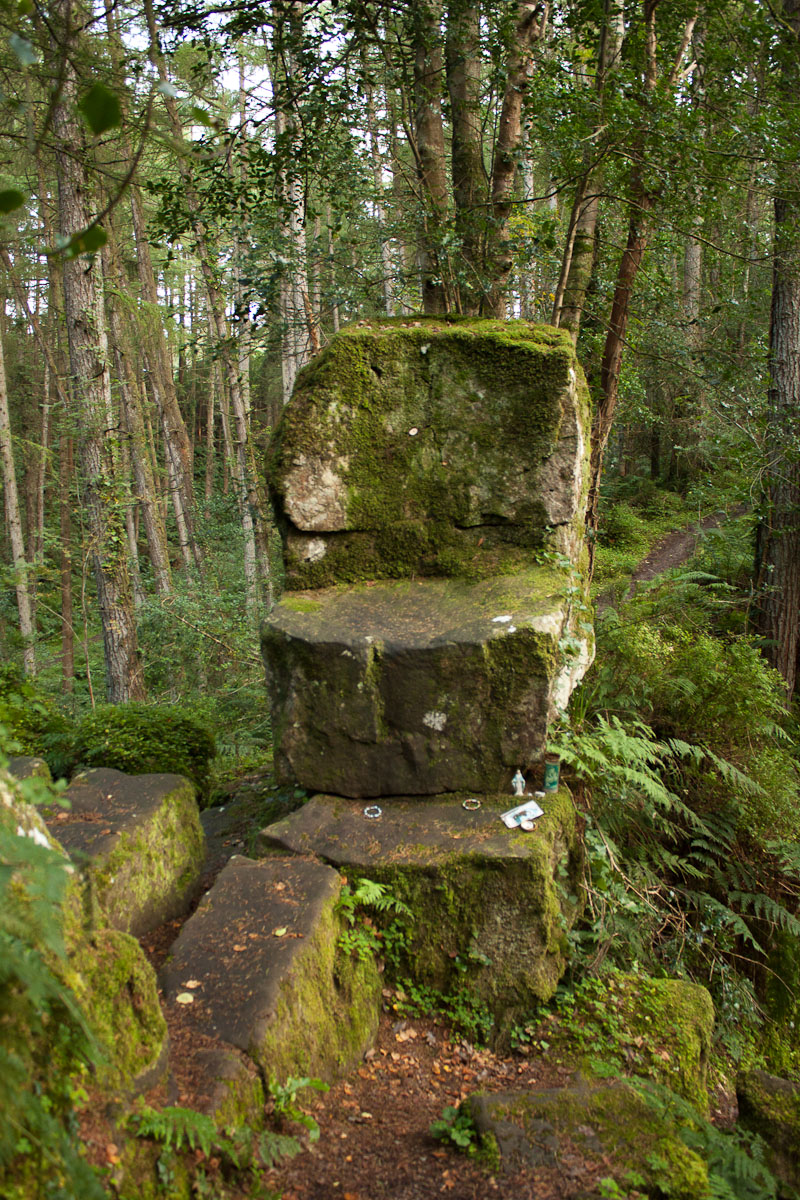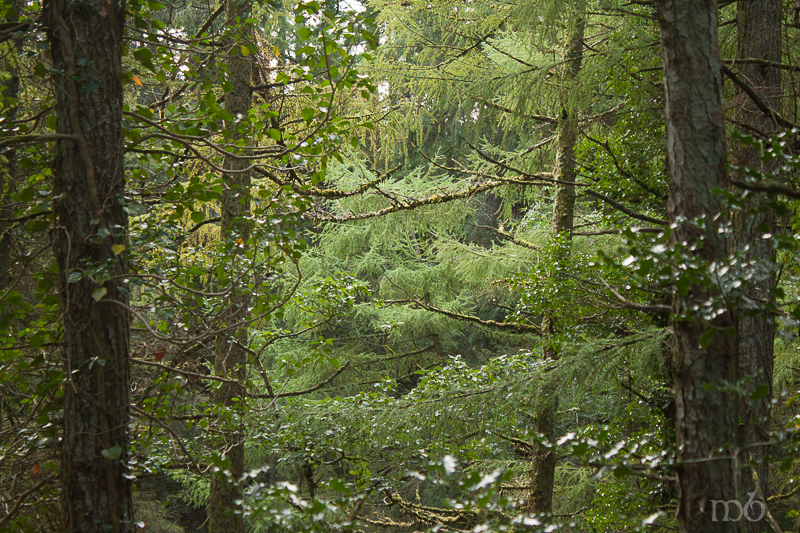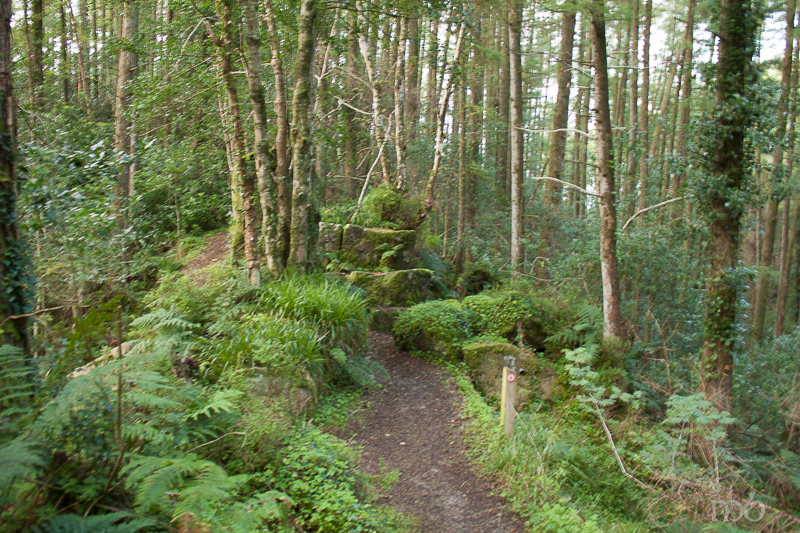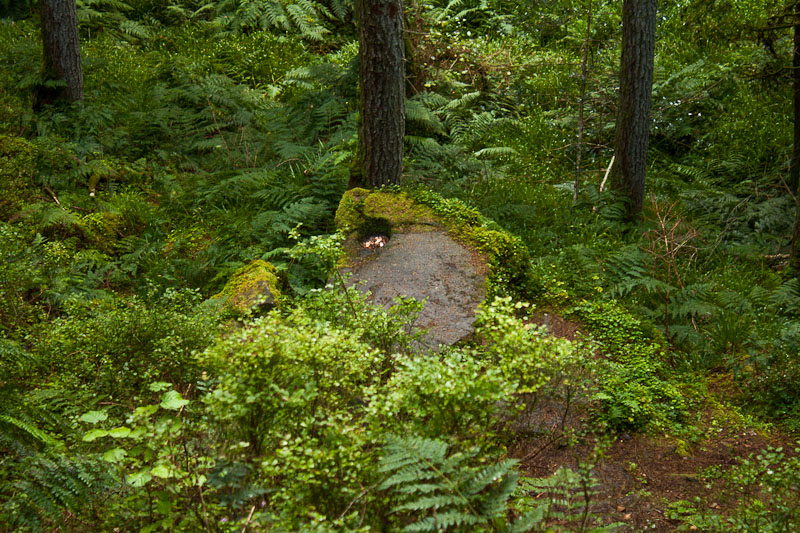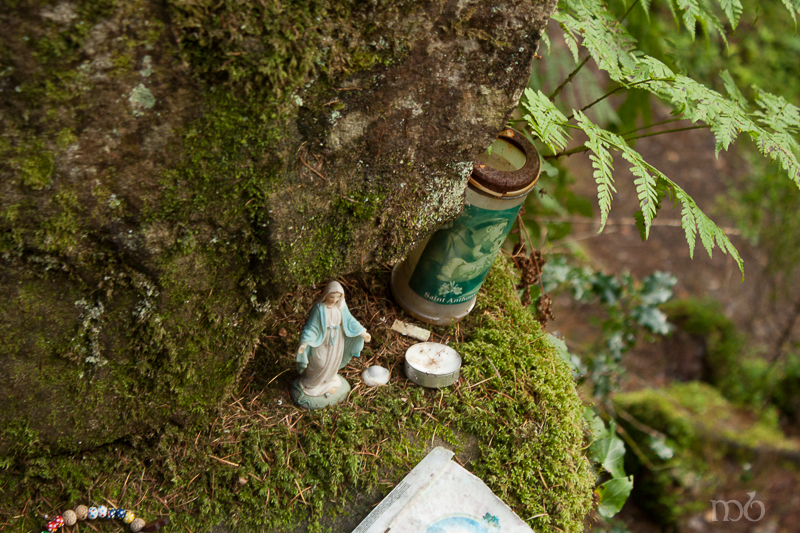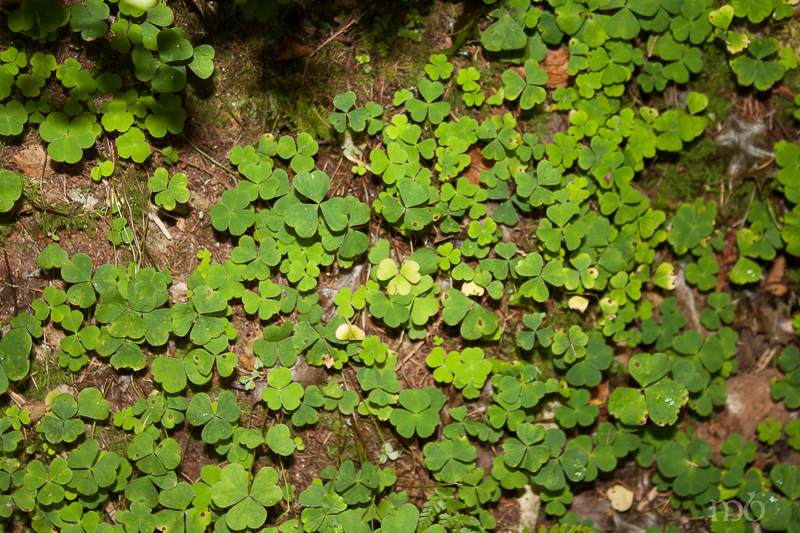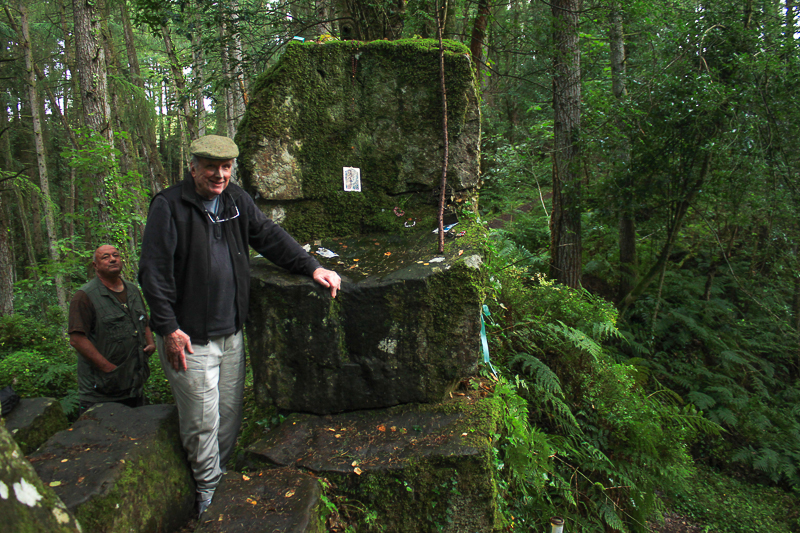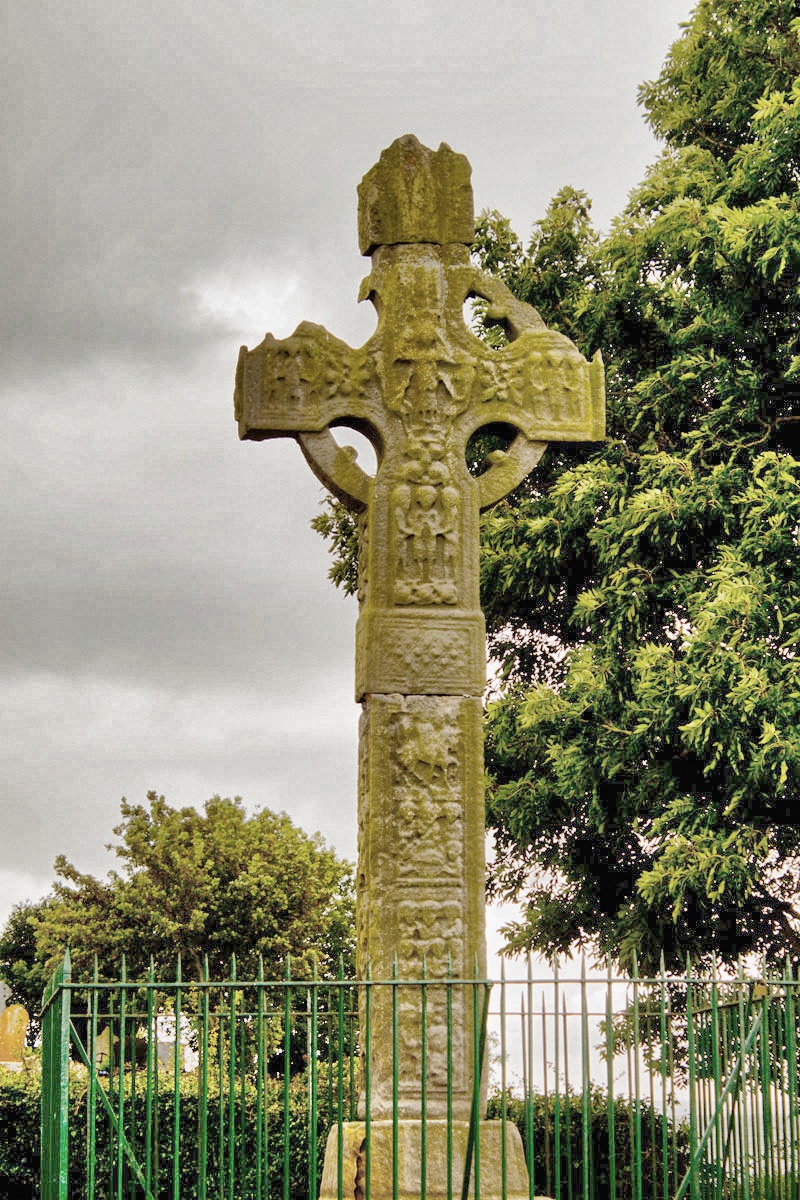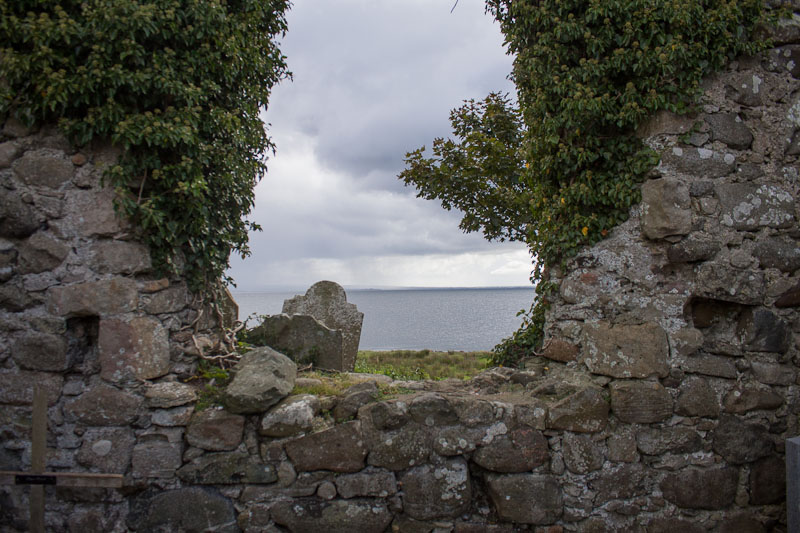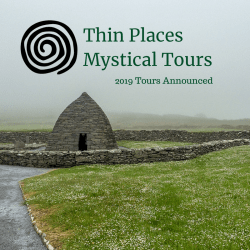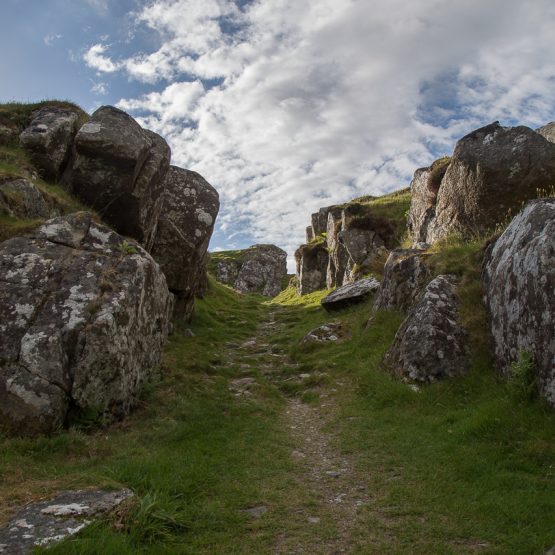St. Patrick’s Chair – Make A Wish
The old County Tyrone legend states that if you sit in St. Patrick’s Chair located in the Altadaven Wood, and make a wish – that wish will come true within one year.
Mine did. But I’m not telling .. because you’re not supposed to tell. You’re supposed to keep it all to yourself.
This throne-like chair is carved out of one huge hunk of rock, and how it got placed so high on a cliff-like edge of the path through the woods is anyone’s guess. It’s been there for centuries.
Altadaven means “cliff of the demons.” It’s believed that this site, found deep in the thick forest surrounded by amazingly tall fir trees and hard woods with holly and ivy and fern lining the path, was once a meeting place for the druids. The legend tells of how St. Patrick came to this place and drove the demons (druids) “over the cliff.”
So what once was pagan became Christian. And what once was a center for druidic ritual became a center for prayer and Christian devotion. Today, tokens left behind at the site suggest both Christian and non-Christian people come as pilgrims to this powerful site.
There is a definite separation of energy at the entrance to Favour Royal Forest – as it used to be known. The entrance to the forest is a defined edge, with a keen sense of power. It’s a crossing, an opening into place with different energy.
The forest is thick and damp and the trees tall and slim with feathery leaves. The path is lined with ivy and fern. It is part of an old road called the Sliabh Beagh Way that runs across the countryside. It’s long been known as and enchanted road, and the forest around this part of the path is still referred to as the Fairy Green. It ascends to Pinnacle Rock which is where the Chair is.
I knew that we were on our way to see St. Patrick’s Chair because a friend brought me there. But I wonder how travelers would feel who didn’t know it was there – they were just walking this ancient path feeling the closeness of the trees and the energy around them… and then …. at the top of a rise they see this throne-like chair, six feet high, hewn from a boulder. And suddenly they know this is some special place. Some amazing place of resurrection.
From the chair there is a steep path leading down to another massive rock, this one with a small well carved out. There is water in the well and the path is lined with clooties and rags left behind by people who brought burdens to this holy well. They say the well never runs dry and that the water has healing properties. Others say the rock with the bullaun is covering an open chamber.
Tokens have been placed on the chair by pilgrims. Rosaries, holy cards, medals, statues, coins, a candle. The air is thick with wishes and dreams both recent and ancient. So many hopes are left to rest on St. Patrick’s Chair.
If you visit St. Patrick’s Chair, be sure to make your own wish. But don’t tell anyone.
The air around this place is charged with an energy that is no so gentle but more powerful, thick with presence. And the beauty of the forest is stunning. So much of Ireland is rock and open fields and rolling hills. A forest that one can easily walk through is a special to find.
If ever there was a portal into the world beyond this on, it would be here.
St. Patrick’s Chair and Holy Well are on the 2014 Discover the North Tour of Ireland.
Ardboe – Mystical Site on Enchanted Lough Neagh
ARDBOE or Ard Bó – a thin place in County Tyrone.
In Irish the name means Height of the Cow. The Ardboe high cross stands 18 feet high on the shores of Lough Neagh. It has 20 scenes from the Old Testament carved into its shaft that are still quite clear even after centuries of weathering out in the elements.
This and similar high crosses throughout Ireland were teaching tools used by the monks for religious education. In the early days of the Church, few villagers or farmers could read, so the bible scenes on the cross were used as a way to illustrate the lessons of the new Christian religion.
St. Colman founded a monastery in the 7th century on this site and built a church. The name Ardboe came from a legend that the mortar used to build that church came from a magic cow that emerged from the lough (Lough Neagh) that had gone dry. The milk from that cow gave strength to the builders as well as the building. In the 16th century, that old church built by St. Colman gave way to a new church – a church that still stands today as a crumbling ruin on the shores of Lough Neagh, clinging to that holy space, drawing its energy.
Lough Neagh is linked to enchantment, believed to be a dwelling place for the fairies. One of tales of Lough Neagh’s origin is that Finn MacCool, the famous Irish giant from Ulster, was chasing his arch-rival from Scotland and the rival was getting ahead of him. Finn MacCool reached down and scooped up a handful of dirt and stone and flung it at the fleeing Scottish giant, missing him by miles. The dirt and stone fell into the Irish Sea and became the Isle of Mann. The hole left in the ground from where Finn scooped up the dirt, became Lough Neagh. The Lough is now the largest freshwater lake in Ireland and Britain, covering 151 square miles and touching five of the six counties of Northern Ireland. For centuries people have believed that its waters have healing powers.
The energy around Ardboe is palpable. It is likely that the land where the monks of St. Colman built the church was already identified as a sacred site. When approaching Ardboe cross and church, one is called to be still. The entire landscape of water, grass, trees and stone is knitted together with a kind of oneness that clings to its past — even while sitting in the present.
To approach Ardboe is to walk into that time of St. Colman and the time of the people before him who also worshiped and prayed at this sacred, thin place. I’m not the only who has felt that special energy of Ardboe. My friend, Maura Brooks, a native of County Tyrone so believes in the mystical energy of Ardboe that she brings travelers to the site on a regular basis. It is Maura who introduced me to Ardboe, and she’s produced a short video about it that give some great commentary from a local perspective.
Irish writer, Polly Devlin, who grew up near Ardboe wrote about the Arboe church site in the 1950s…
The position of the small primitive group of holy buildings silhouetted against water and sky affects us, and most visitors, to initial stillness and silence. The crumbling arched windows frame the perpetual movement of the small crested waves of the lough.
Ardboe is a thin place. It is a stop on our Thin Places tour of Northern Ireland in Sept. 2018.
